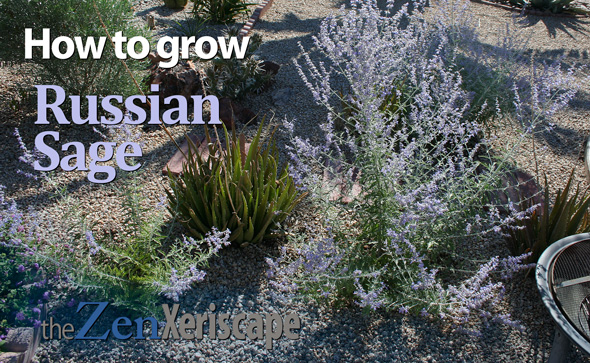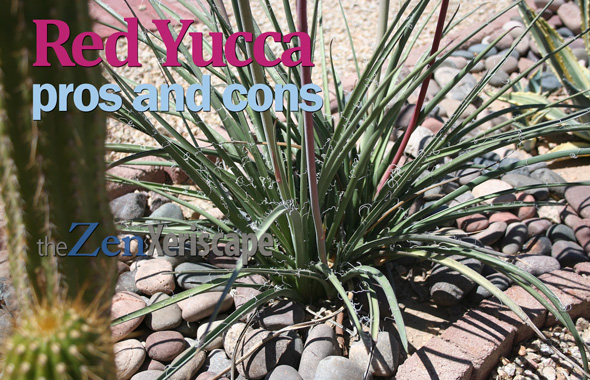Spanish lavender (Lavandula stoechas ) will add a colorful, aromatic flair to your southwestern xeriscape. Amazingly, the Spanish lavender will reward you with prolific, purple flower blooms throughout the growing season. Here’s how to grow Spanish lavender.
To withstand heat, select the Spanish lavender
In addition to the Spanish lavender variety, you might also see sub-species of the Lavandula labeled as French lavender or the butterfly lavender, along with many other sub-species.
The main reason I selected the Spanish lavender for my landscape is because it is one of the best varieties to withstand the brutally hot summers that are common in the southwestern United States.
Browse unique-looking cactus plants on Amazon! Research vendor before buying. (As an Amazon Associate, I earn a commission from qualifying purchases.)
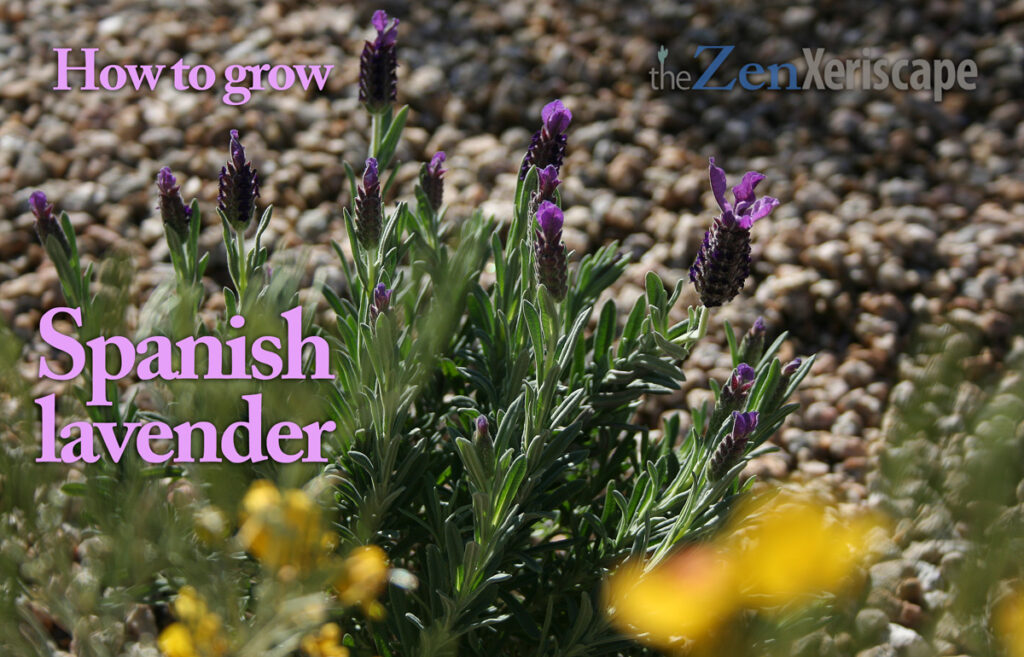
heat-tolerant plant that looks good
in a xeriscape garden, or in a pot.
Photo by Doug Martin
How to grow Spanish lavender
Planting location and soil requirements
The Spanish lavender does best in well-draining soil. If needed, amend your soil with organic outdoor potting mix as well as a little sand (10%).
Plant on an elevation
In my case, I amended the soil and planted my Spanish lavender on an little mound. My small elevation of dirt helps water drain away from the lavender’s roots and prevents ponding around the base of the plant.
In general, this variety of lavender will do well in well-draining rock gardens. Spanish lavenders look so beautiful mixed in with other drought-tolerant xeriscape plants like cacti and agaves.
Little or no fertilizer
The Spanish lavender is most aromatic when it is not fertilized. If you must add fertilizer to your soil because it needs more nutrients, only add a moderate amount. Too much fertilizer will promote lanky, green growth, which then attracts pests.
Does best in full sun
All varieties of lavender love full sun (at least 6-to-8 hours), but the Spanish lavender will especially benefit. This plant is one of the best-equipped for our southern summer heat waves. Our summer heat is reminiscent of its native Mediterranean climate.
Growth rate
The Spanish lavender is a fast-growing perennial. At maturity, the plant might be 12 to 18 inches tall and 18 to 24 inches wide. I split my inexpensive Spanish lavender plant in half, and placed them two feet apart.
To me, they look like a small, dense bush that is covered with unique and beautiful purple flowers.
Buy beautiful, hard-to-find succulents on Amazon! Please carefully research the vendors before buying. (As an Amazon Associate, I earn a commission from qualifying purchases.)
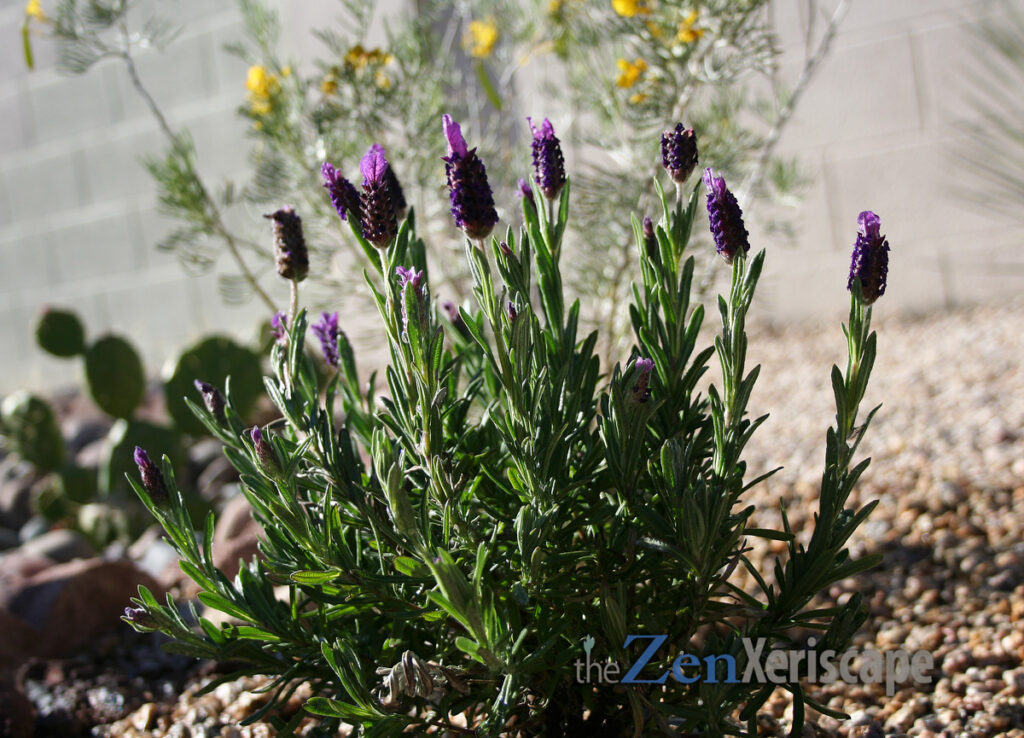
when the top few inches of soil
are completely dry.
Photo by Doug Martin
Water requirements
Too much water can kill your Spanish lavender. This clumping plant is drought-tolerant. After planting, water every other day. However, once its roots get established, gradually cut back to watering once a week.
During the summer, use your finger to test the top few inches of the soil. If the top few inches feel dry, water deeply.
Hardiness zones for perennial growth
In general, Spanish lavender is hardy down to 10 degrees F, and might even survive temperatures that approach 0 degrees F. For perennial growth without cold weather damage, the best USDA plant hardiness zones are 8 to 11.
When I lived in southern New Mexico (hardiness zone 8), my Spanish lavender was briefly hit with single digit temperatures at night, but stayed green.
Plant Spanish lavender in a container
If you live outside the hardiness zones, you can plant your Spanish lavender in a container or pot. Be sure it has holes for drainage and use potting soil mix designed specifically for succulents. Water deeply only when the soil gets completely dry to prevent rotting roots.
Even if you live in hardiness zones of 8-to-11, you can also plant your Spanish lavender in a container. They would look lovely on your porch or by your pool. Or, place them wherever they look good in your landscape.
Amazon has a wide selection of organic potting soil for succulents. (As an Amazon Associate, I earn a commission from qualifying purchases.)
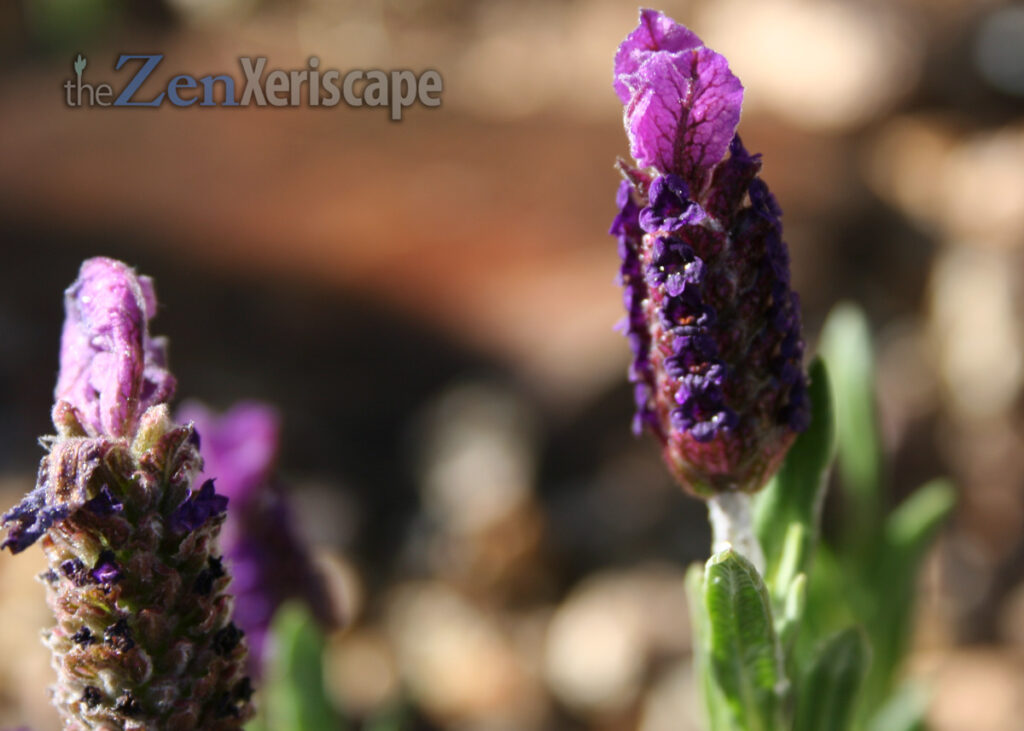
have a luxurious purple hue along
with a unique cylindrical shape.
Photo by Doug Martin
How does Spanish lavender taste?
Not the most edible lavender, but I really like it
Depending on your taste, there are other lavender varieties that taste better with food. Spanish lavender has high amounts of camphor. This substance is derived from many plant sources. High amounts of camphor can smell like mothballs and have a pungent taste.
If you’d like to use lavender to add a unique flavor to your food, better choices are the English and French lavenders. Both of those varieties will add a unique, sweet flavor to your culinary concoctions.
Minty, menthol taste
In my case, I chewed on one green leaf, and liked the taste. There was a slight citrus, and maybe even a wild tea flavor. Now that I think about it, the taste of the leaf reminded me of a slightly more bitter wild tea leaf. Afterwards, my whole mouth had a refreshing, minty-menthol feeling.
Those same flavors were more intense when I put a flower in my mouth and chewed it. After that taste test, I decided that I really like the flavor of Spanish lavender. In fact, I like that it is not as sweet-tasting as the English and French lavenders.
For me, small amounts of this unique-tasting herb are best in my food. It wouldn’t take too much Spanish lavender to overpower a meal. In other words, moderation is best with Spanish lavender. Its best culinary use is to accent other flavors.
It’s easy to grow your Spanish lavender in a pot. Fortunately, Amazon has a wide selection of great looking containers and pots for your Spanish lavenders! (As an Amazon Associate, I earn a commission from qualifying purchases.)
Other plants that look good with Spanish lavender
I planted my Spanish lavender about 20 inches away from a young desert cassia. As both plants grow, the desert cassia will get taller and spill over the Spanish lavender. On the color wheel, the yellow flowers on the desert cassia are complementary to the Spanish lavender’s purple flowers.
Another great complementary plant for this lavender is the golden shasta daisy. This plant produces bold yellow daisy flowers that look so beautiful with the purple Spanish lavender. Just imagine how stunning the two full-grown flower bushes would look side-by-side.
Other great plant and color combinations would be the salvia plants that have red flowers. Red and purple are split complements on the color wheel, and also make outstanding color combinations.
Use your own innate, creative instinct to combine colors
Of course, when it comes to flowers and color combinations, you can let your own imagination determine the best plant combinations. We all have an innate instinct of what looks good in the garden—I’m sure that your own sense of color will help you make the best plant combination choices.
If you don’t like your plant combinations, just move things around!
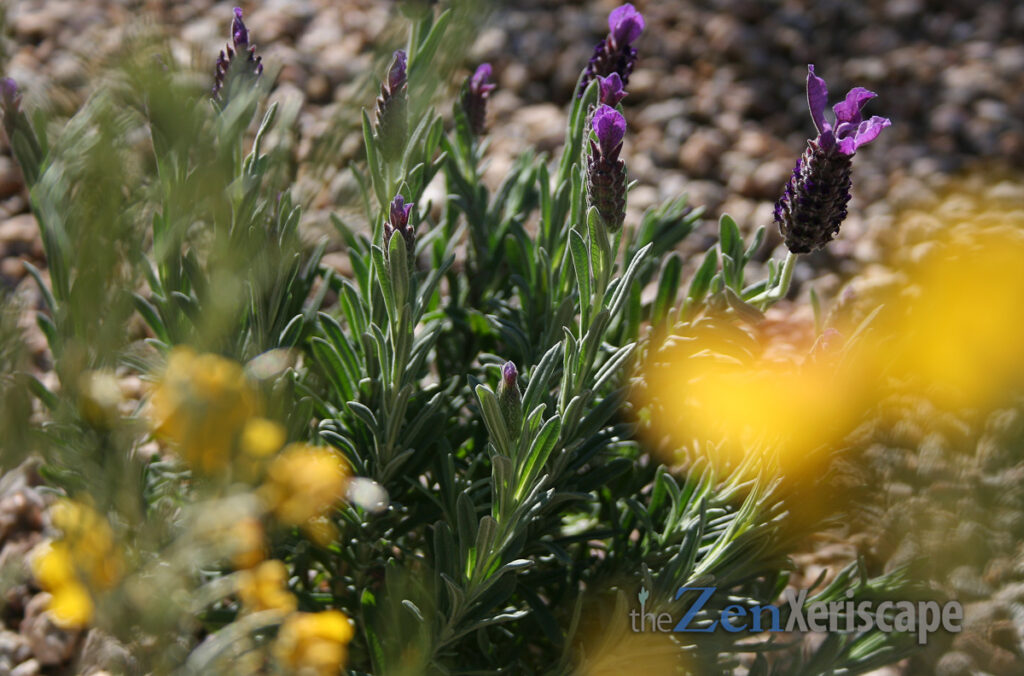
combine wonderfully with yellow
or red flowers, and maybe
even some blues!
Photo by Doug Martin
TAKEAWAYS:
How to grow Spanish lavender (Lavandula stoechas )
Spanish lavender is a hardy, drought-tolerant plant with unique purple flowers shaped like a cylindrical pineapple. While not as aromatic as other lavenders in your garden, the Spanish lavender more than makes up for its lack of culinary appeal with its beautiful appearance.
This lavender needs a bright, sunny location, along with well-draining soil. Too much water can kill your plant. The Spanish lavender is an excellent plant choice for your landscape, xeriscape, or rock garden. It makes a beautiful contrast with other drought-tolerant plants like cacti and agaves.
Before you plant your new Spanish lavender plants, browse the newest garden tools on Amazon. (As an Amazon Associate, I earn a commission from qualifying purchases.)
Content and photos by Doug Martin and The Zen Xeriscape

Get Prime! (As an Amazon Associate, I earn a commission from qualifying purchases.)

